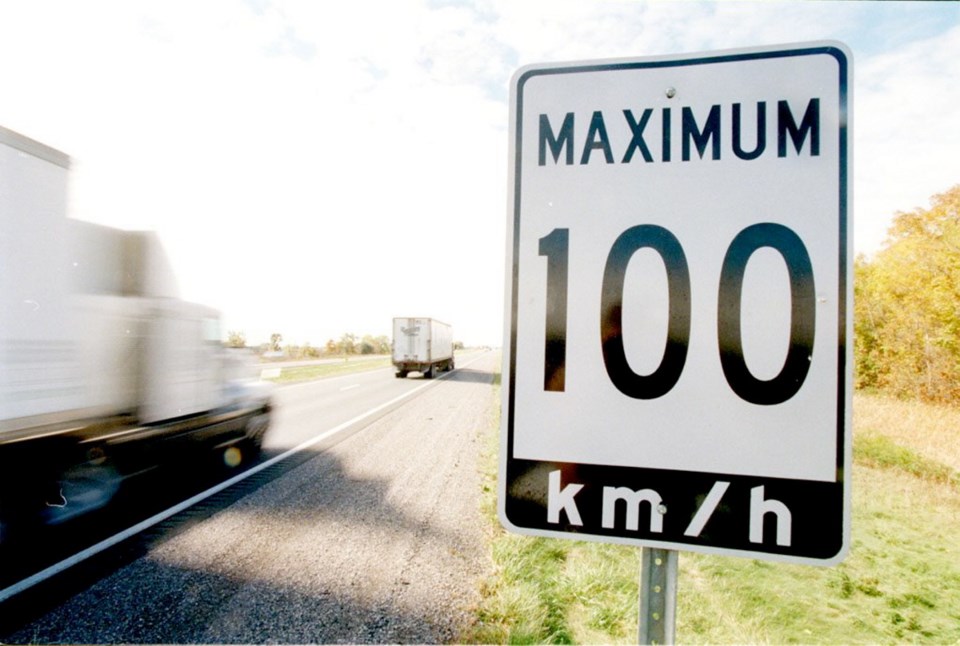Crash rates increased on nearly half the highways where the B.C. government raised speed limits in 2014, Transportation Minister Todd Stone said Tuesday.
The early data shows crash rates rose on 14 of 33 sections of highway with higher limits. The rates decreased or remained the same on 19 sections.
The analysis compared crash statistics from Nov. 1, 2014, to Oct. 31, 2015, with data from the previous three years.
Stone said it’s too soon to draw any conclusions about emerging trends, but pledged to roll back the speed limits on two of the 14 roadways with higher crash rates “out of an abundance of caution.”
The speed limit will return to 90 kilometres an hour on Highway 1 from Hope to Cache Creek and to 80 km/h on Highway 5A from Princeton to Merritt.
The province will make engineering changes on the other 12 sections by improving road markings, adding rumble strips, and installing variable speed signs.
Stone rejected speed limit reductions on all 14 highways with higher crash rates.
“We are taking an evidence-based approach to this,” he said. “The most prudent and responsible thing to do here is to assess each and every segment on its own merits and ensure that we’re doing everything we can to have the safest possible speed limit on that segment.”
He noted, for instance, that the crash rate fell on the Coquihalla from Hope to Kamloops despite the speed limit increasing to 120 km/h from 110 km/h. On other highways, the crash rate increased despite people actually driving slower, he said.
On Vancouver Island, the rate of crashes increased even while the rate of speed decreased on a 9.4-kilometre stretch of highway from Cowichan Bay to Nanaimo. The government plans to improve access at Cowichan Bay Road and review signal operations at all intersections.
Both the rates of speed and crashes increased on a 44-kilometre segment from Bloedel to Sayward north of Campbell River. The province plans to improve road markings, add rumble strips on the centre line and install enhanced LED wildlife signs.
No changes are planned for a 114-kilometre stretch of highway from Parksville to Campbell River, where crashes decreased after the speed limit was increased to 120 km/h from 110 km/h.
Trevor Hancock, a professor of public health and social policy at the University of Victoria, questioned the decision to roll back speed limits on just two of 14 problem sections.
“Why not lower the speed limit on all 14 of those sections?” he said. “It’s like we’re taking all these other more expensive safety things — spending money on markings and signage and rumble strips — which is all fine. But the cheapest thing, which is to lower the speed limit, they’re not doing.”
Stone said University of B.C. researchers assessed the data and determined that crashes for all 33 segments of highway where the speed limit was increased were up by 11 per cent.
Highways where the speed limits were not raised had a nine per cent increase in crashes, he said.
The minister said other jurisdictions have reported similar or much higher increases, possibly due to lower gas prices, more cars on the road and a growing distracted driving problem.
“There’s obviously something going on,” he said.
The government said that distracted or inattentive driving was the leading cause of crashes on the 33 roadways where speed limits were increased.
Hancock, who writes a column for the Times Colonist, said the fact that distracted driving is a leading cause of crashes points to the need for lower speed limits.
“Anything you do that distracts your driving, if you’re going faster, will make it worse,” he said. “So the combination of those things is a bad idea. Basically, why compound the fact that people are distracted, by allowing them to then drive faster? That makes no sense.”



